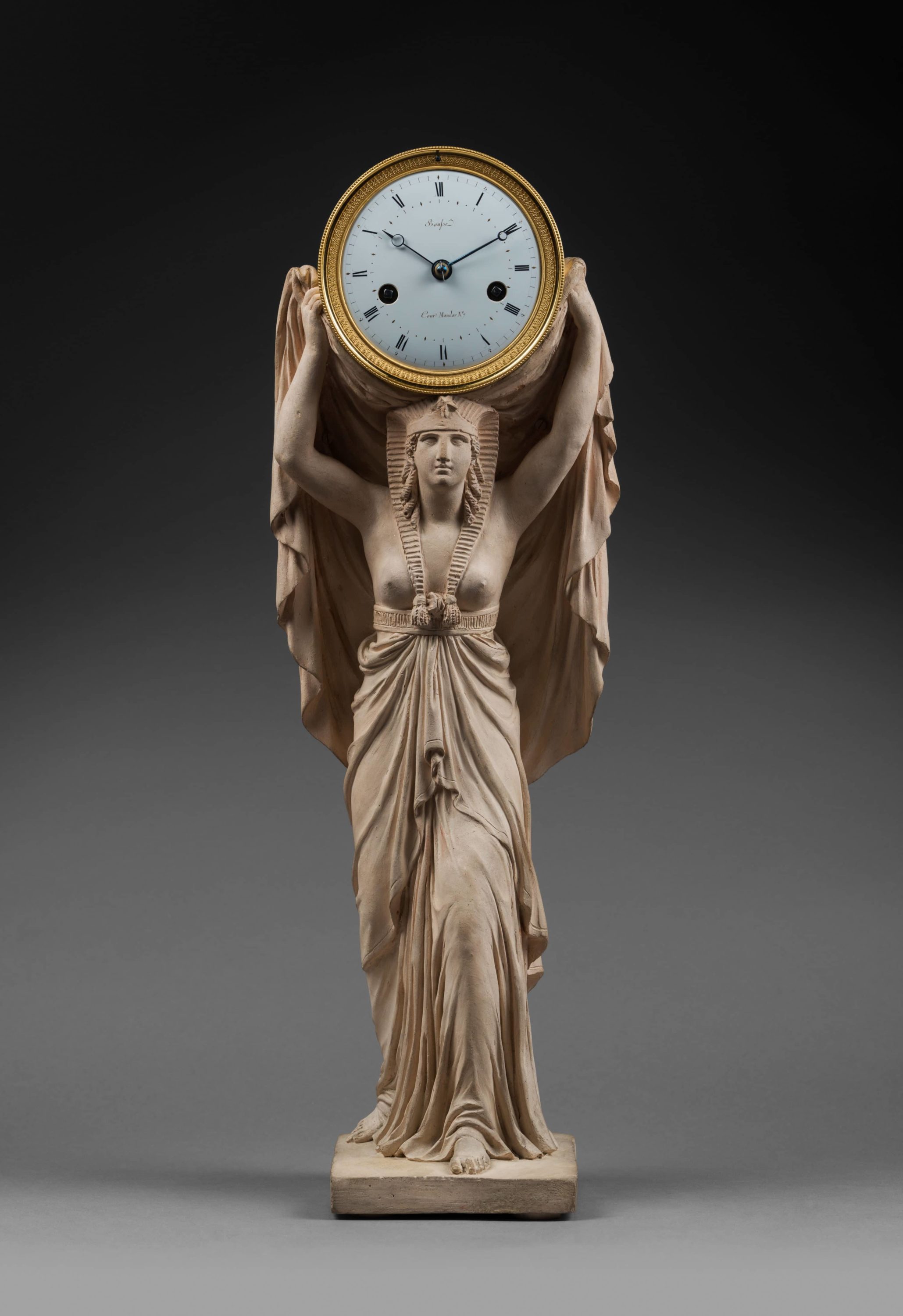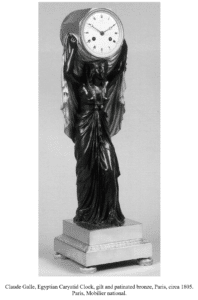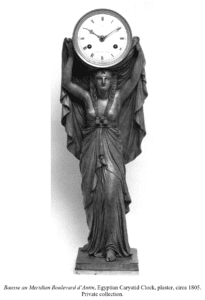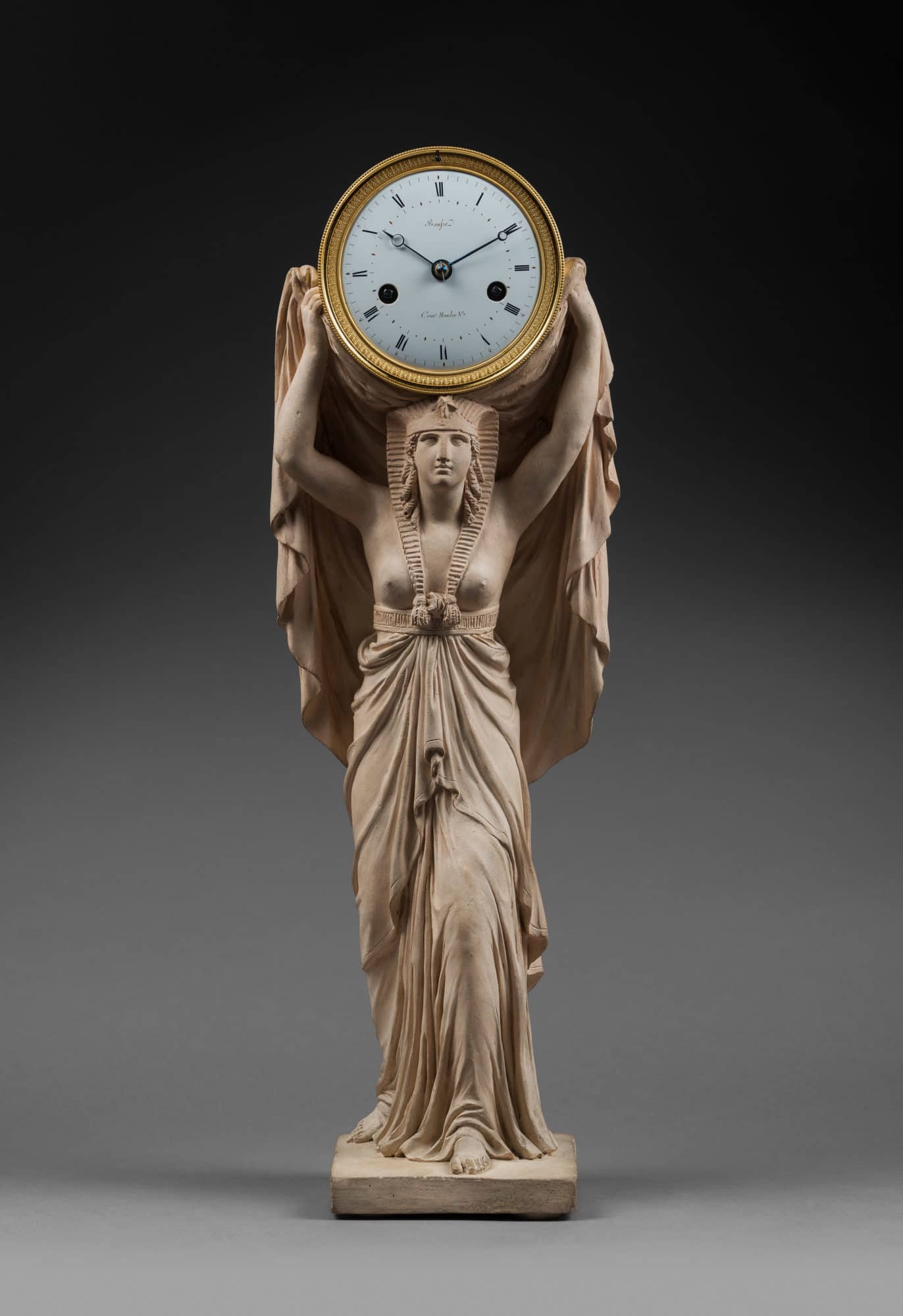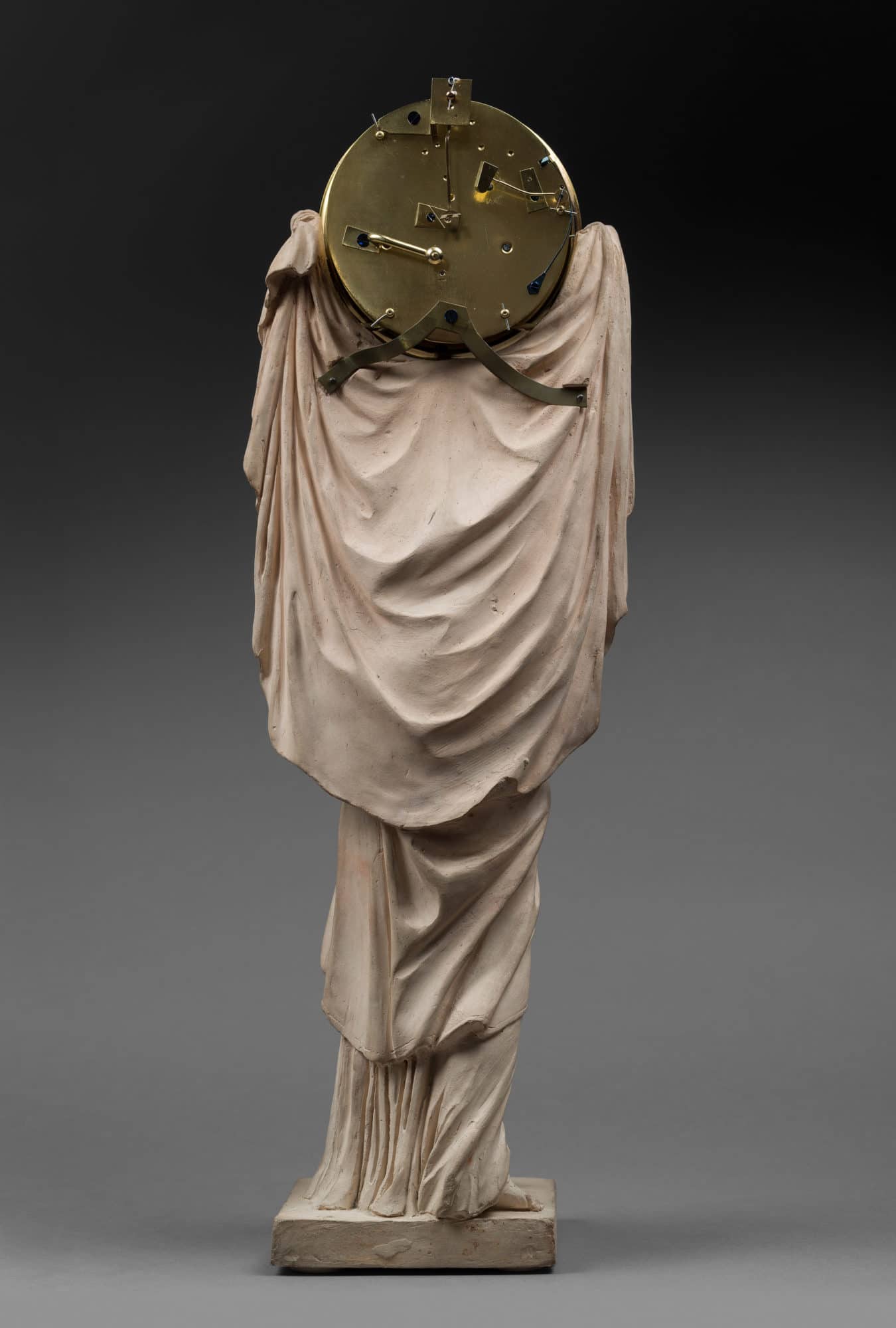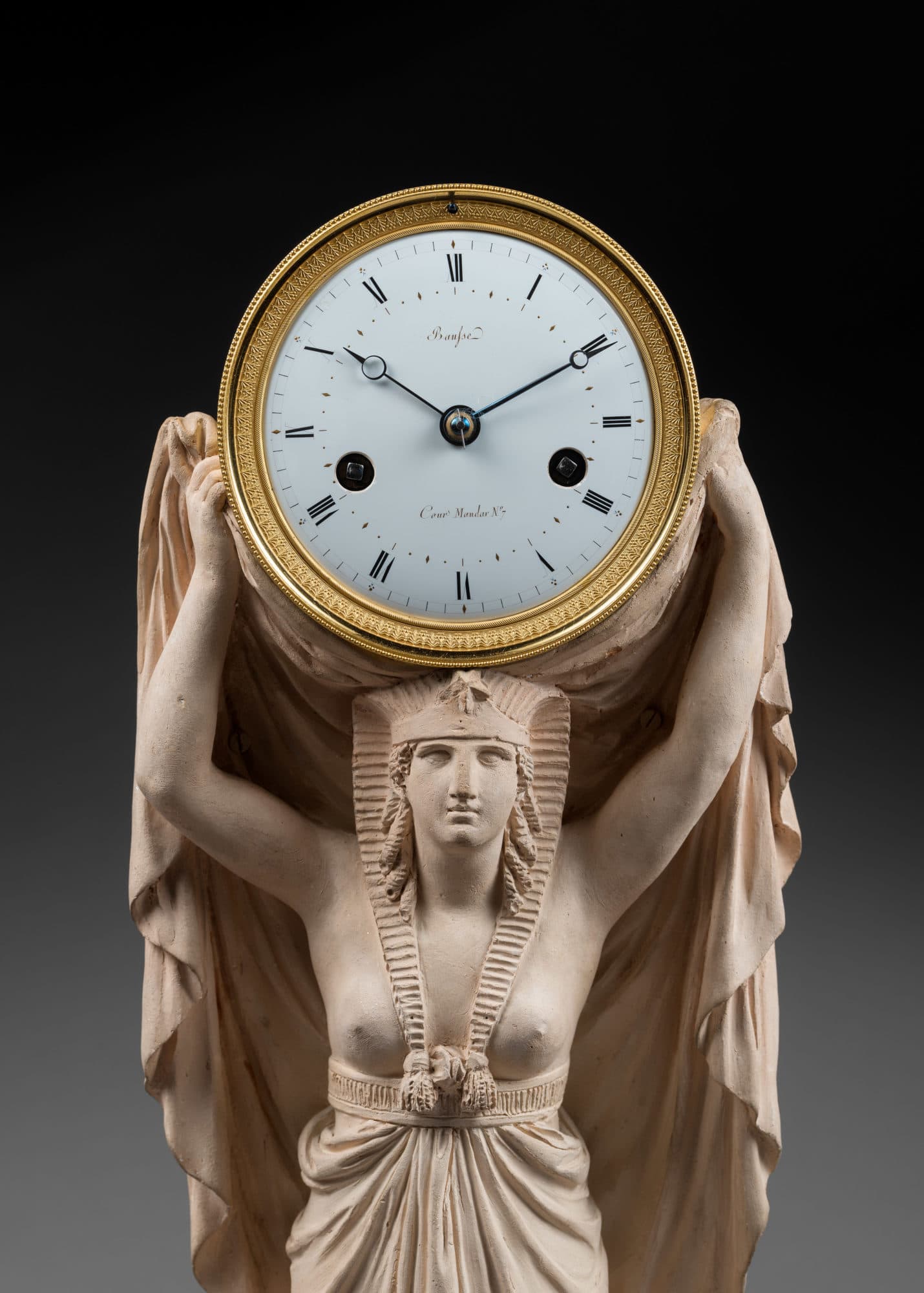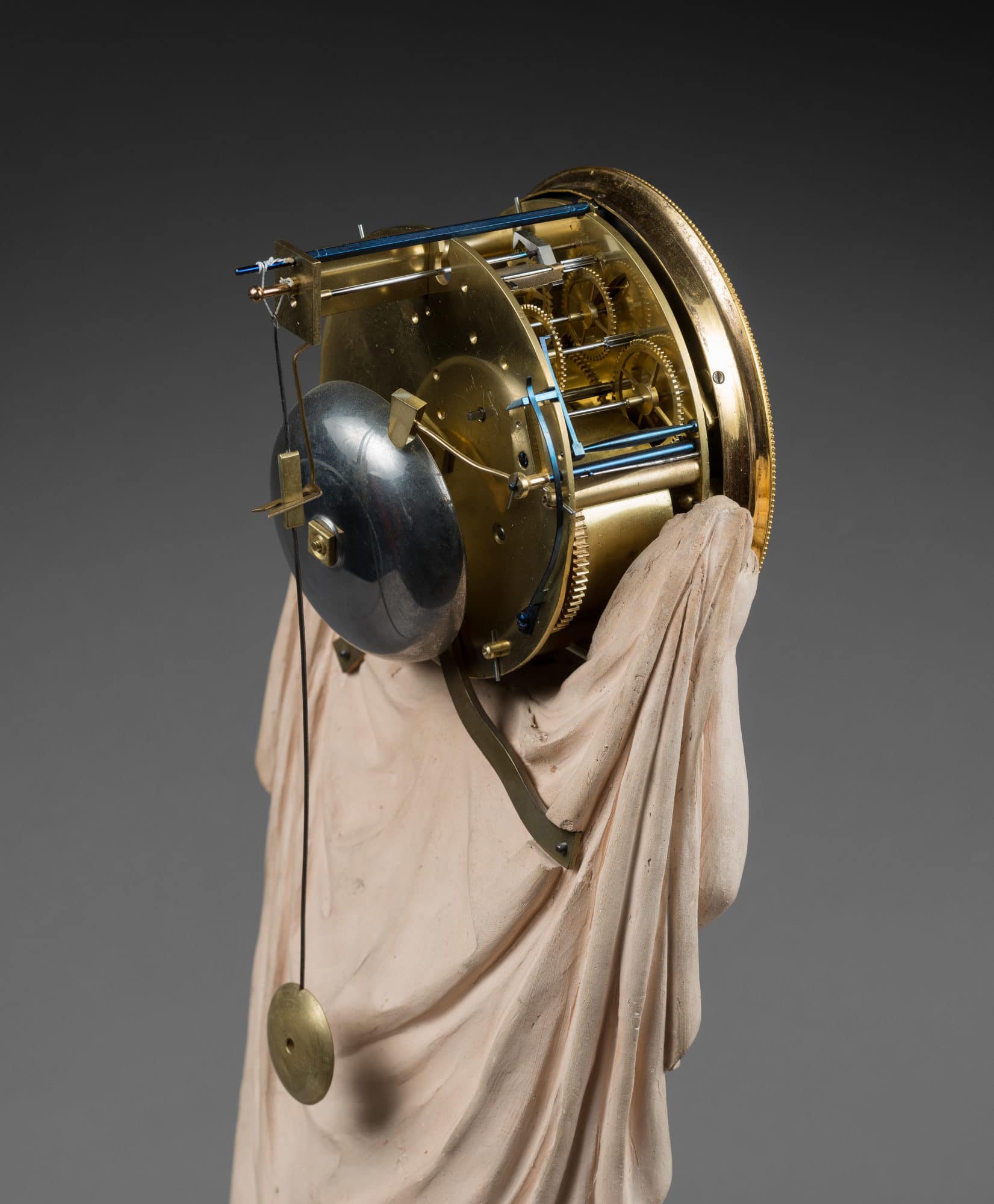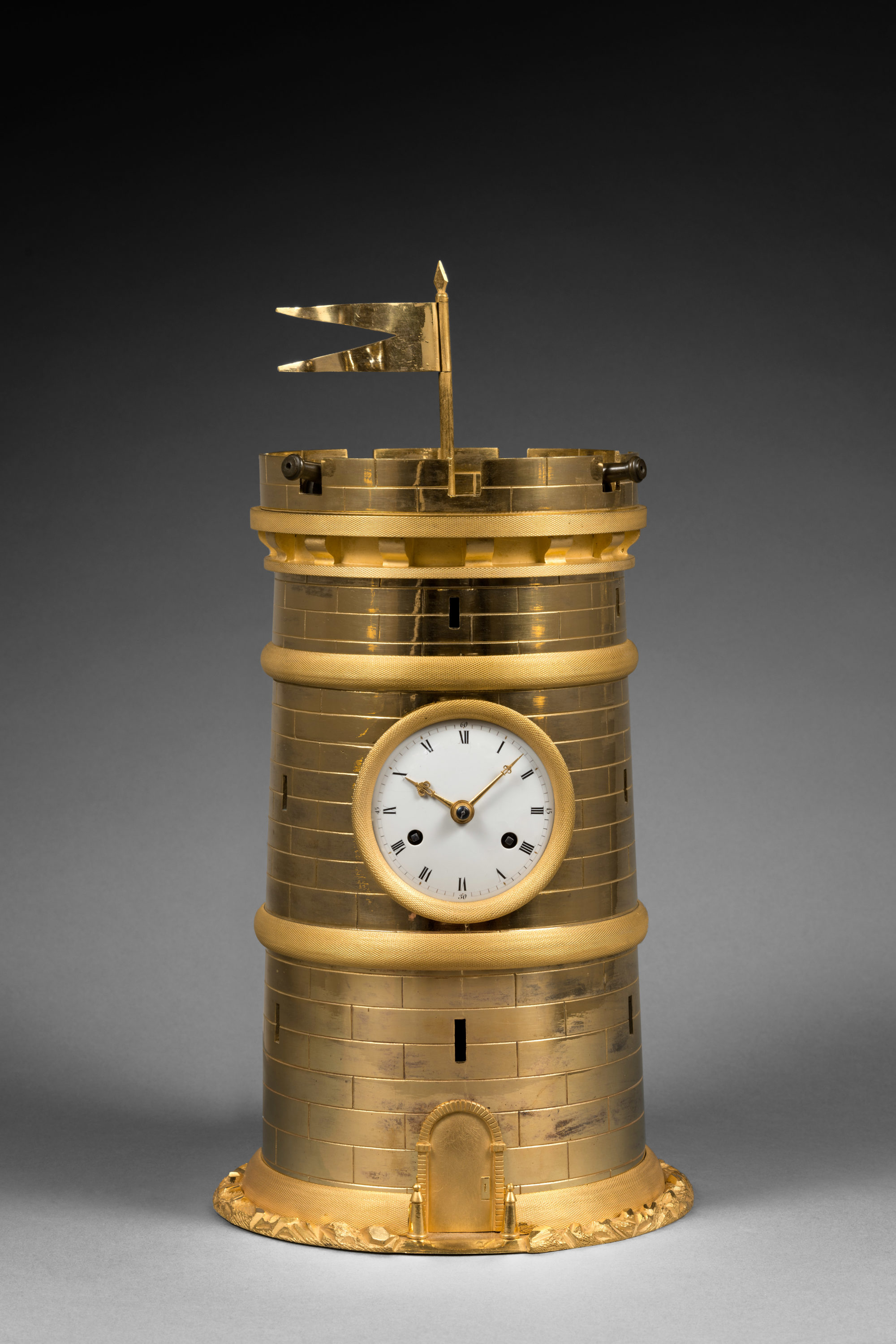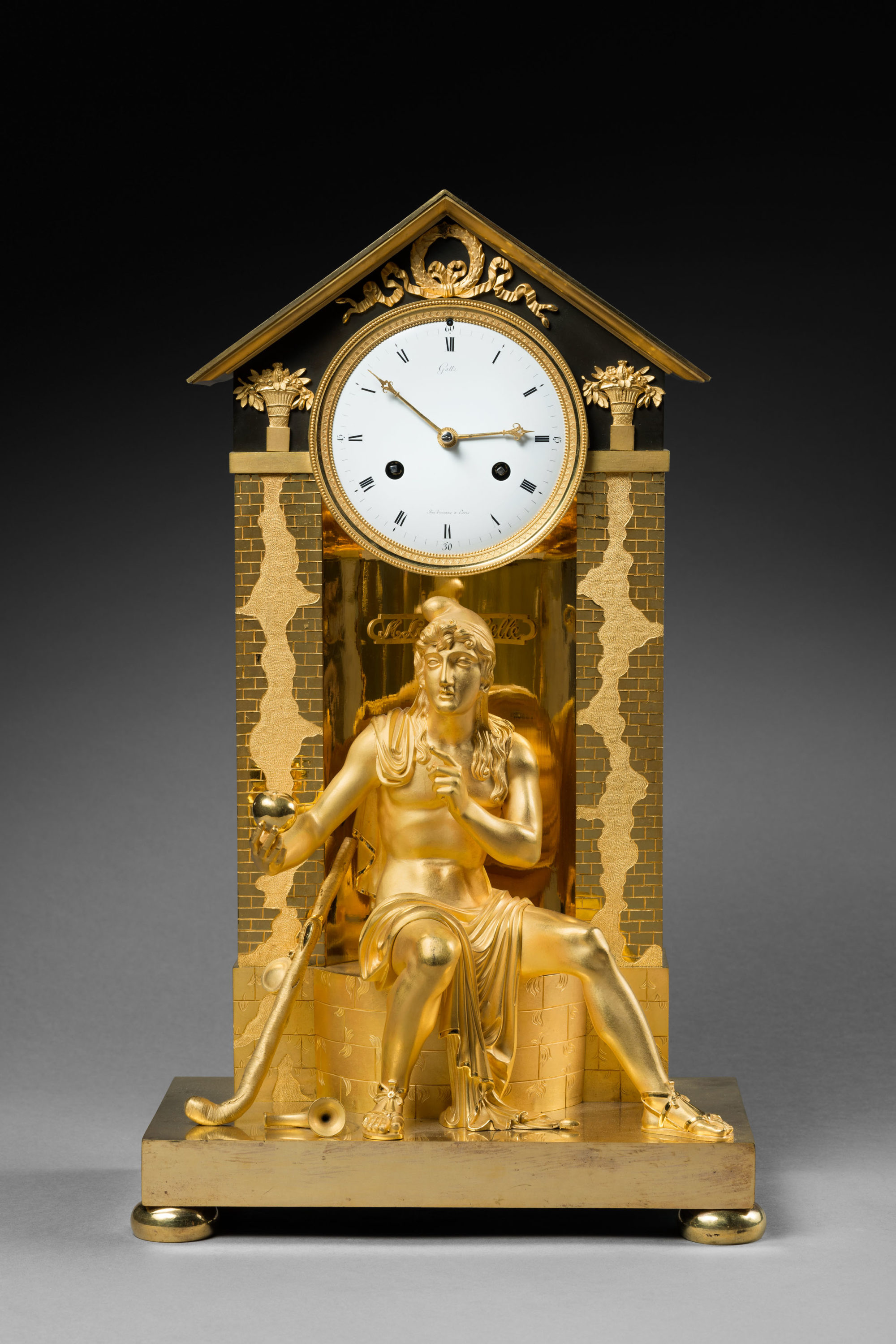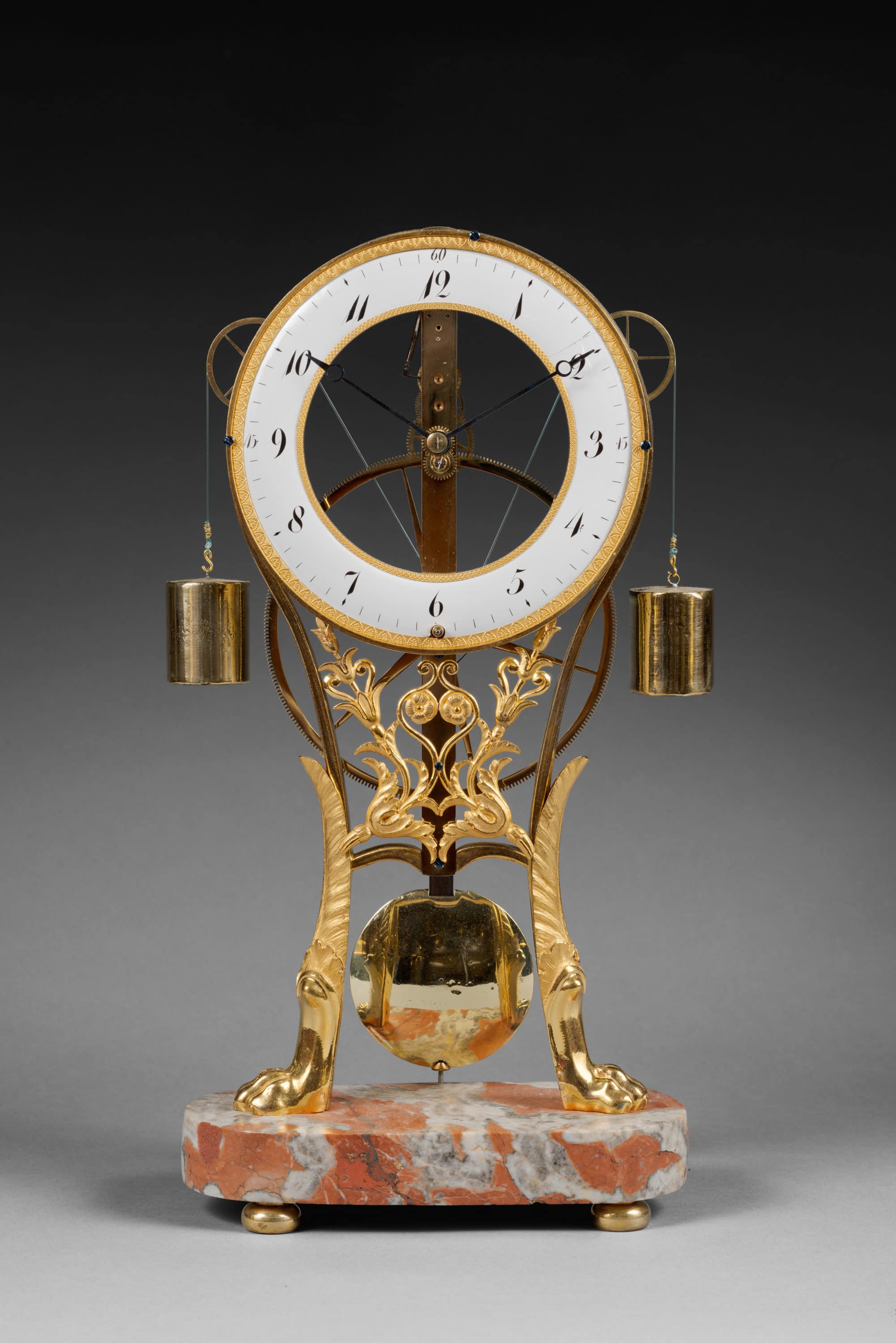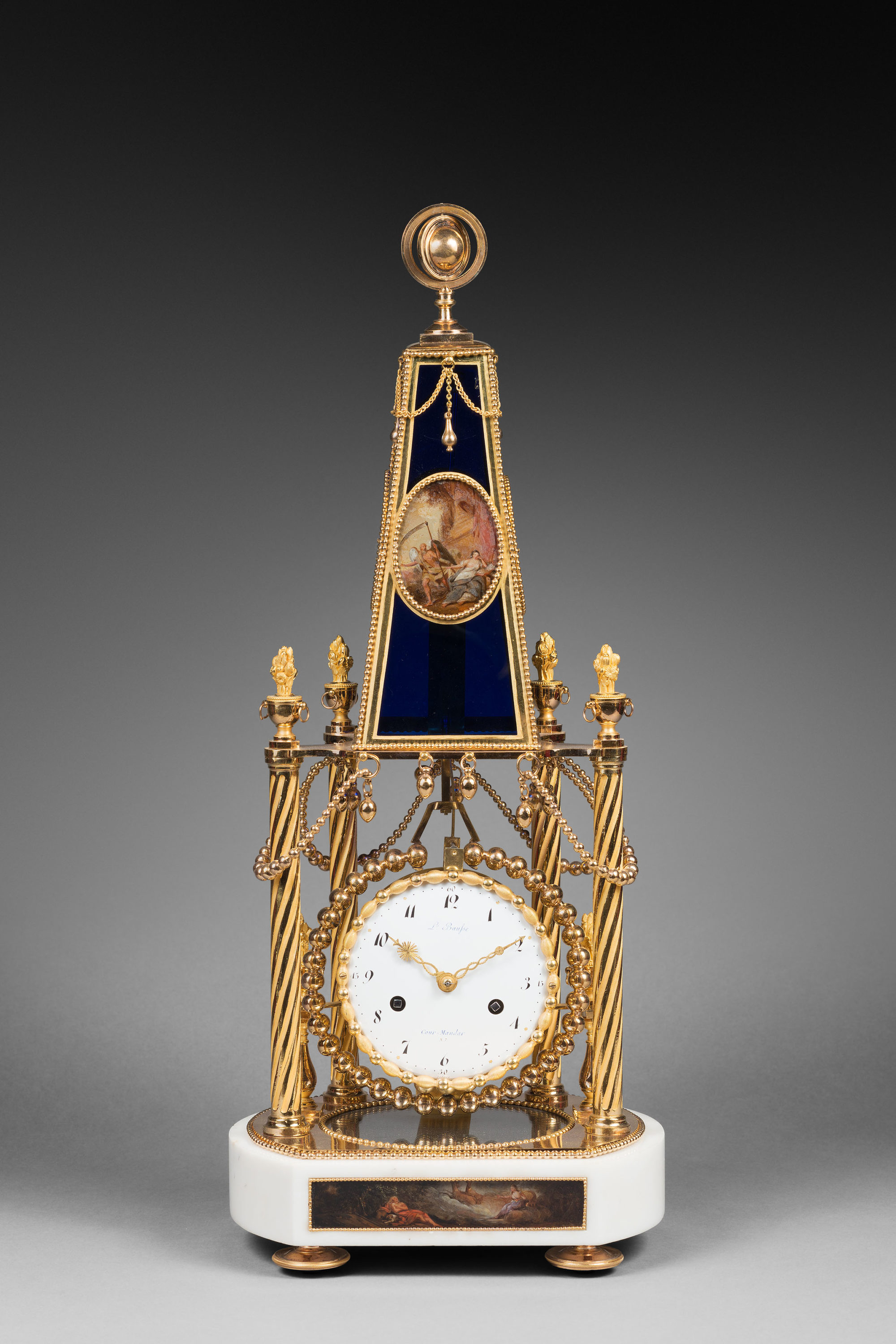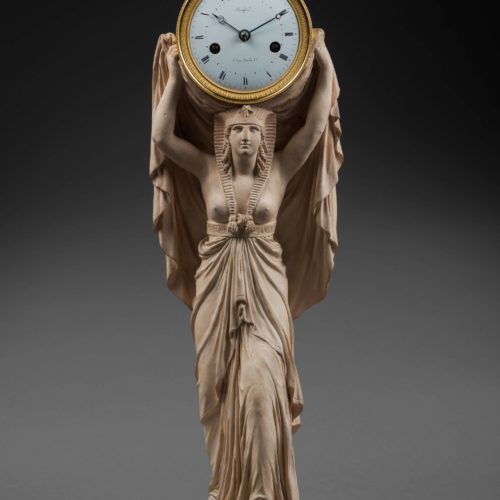Rare “Egyptian Caryatid” Terra Cotta Mantel Clock
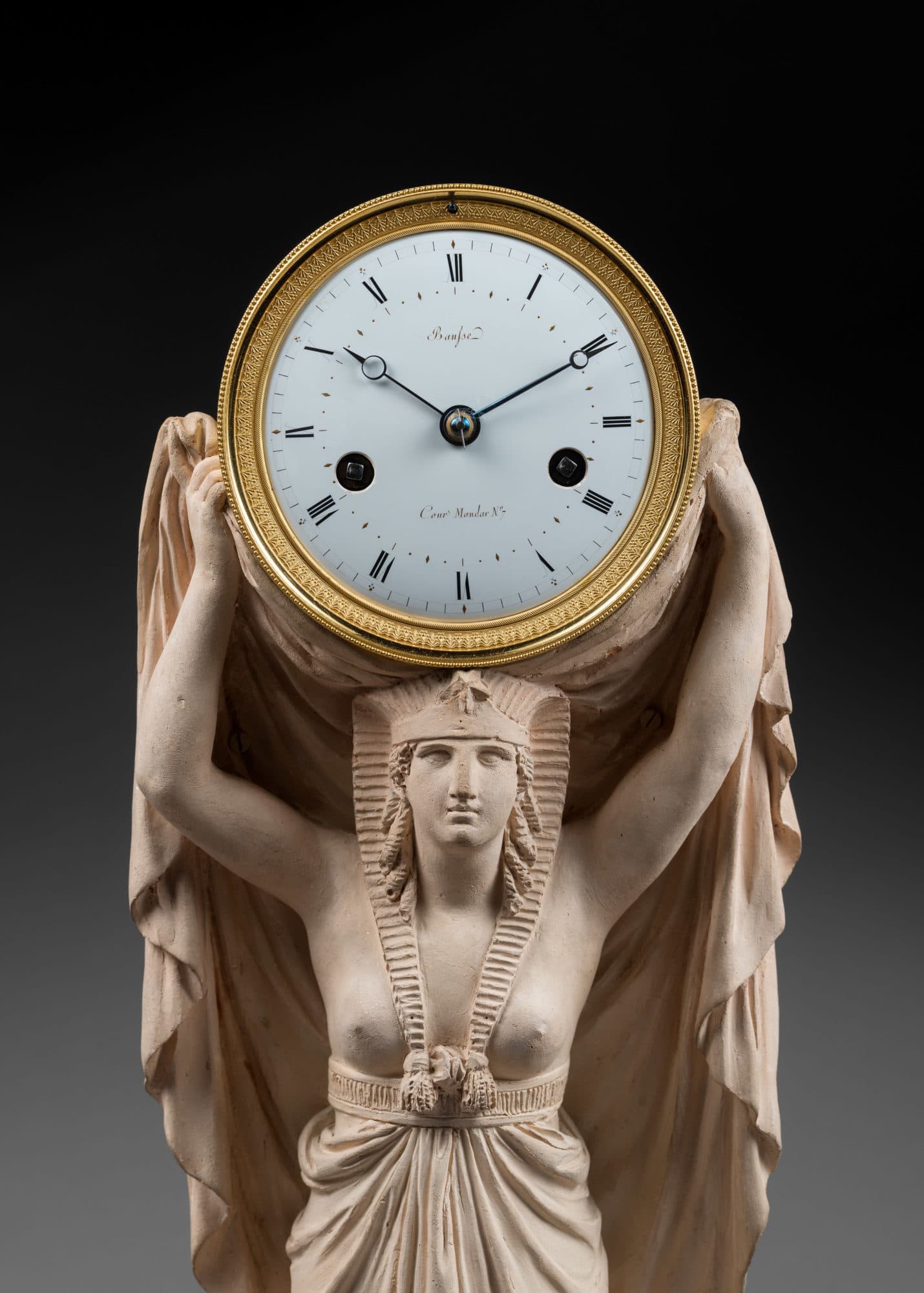
Terra Cotta Figure after a Model by Louis-Simon Boizot
Paris, early Empire period, circa 1805
The enamel dial, signed “Baufse Cour Mandar n°7”, indicates the hours, in Roman numerals, and the minutes, by means of blued steel Breguet hands. The gilt bronze bezel is adorned with a frieze of palmettes and flowers and is framed with beading. It is supported by a magnificent Egyptian caryatid who is standing with her left leg forward. She is wearing a long classical toga that reveals her breasts and a nemes headdress that is attached beneath the bust. In her upraised arms she holds a finely modelled drapery that surrounds the lower part of the dial. The rectangular base is also made of terra cotta.
Discover our entire collection of antique mantel clocks for sale online or at the gallery.
La Pendulerie is the specialist in fine and rare antique clocks, based in Paris.
The unusual design of the present clock illustrates the influence of Napoleon Bonaparte’s Egyptian campaign on French decorative arts in the late 18th and first two decades of the 19th century. The purpose of the campaign was to undermine Britain’s dominance in the area. The model derives from a statuette created in 1788 by sculptor Louis-Simon Boizot (1743-1809) for the Sèvres Royal Manufactory. A decade later, it was produced in bronze by chaser François Rémond; one such clock is in the Prague Museum of Decorative Arts (illustrated in C. Baulez, “Les bronziers Gouthière, Thomire et Rémond”, in Louis-Simon Boizot 1743-1809, sculpteur du roi et directeur de l’atelier de sculpture à la Manufacture de Sèvres, Paris, 2001, p. 292).
Several years later, a variation of Rémond’s clock was created – the model of the present clock. Two such examples are recorded: the first, in patinated and gilt bronze, was delivered by bronzier Claude Galle to the Elysée Palace. It is now part of the Mobilier national in Paris (illustrated in M-F. Dupuy-Baylet, Pendules du Mobilier national 1800-1870, Dijon, 2006, p. 114, catalogue n° 49); the second example, in plaster, bears the signature “Bausse au Meridian boulevard d’Antin”; it is today in a private collection (illustrated in H. Ottomeyer and P. Pröschel, Vergoldete Bronzen, Die Bronzearbeiten des Spätbarock und Klassizismus, Munich, 1986, p. 366, fig. 5.13.4).
This Parisian clockmaker, not mentioned in the literature, appears to have been named master horologist during the revolutionary period. His workshop address, n° 7 Cour Mandar, confirms this hypothesis, for the street was created in 1790. He was probably the maker of a clock of the “à l’Amérique” type, based on the model registered by Jean-Simon Deverberie on the 3rd of pluviose, year VII, which appeared on the market several years ago. A clockmaker by the name of Bausse, but whose first name was Pierre-Guillaume, signed the movement of a clock depicting Telemachus driving his chariot under the protection of Athena (see P. Kjellberg, Encyclopédie de la pendule française, Paris, 1997, p. 417); he was perhaps the son of the present clock’s maker, possibly having taken over his father’s workshop during the Empire.
Louis-Simon Boizot (1743 - 1809)
The son of Antoine Boizot, a designer at the Gobelins tapestry manufacture, Boizot worked in the atelier of sculptor René-Michel Slodtz (1705–1764), who also trained Houdon. Boizot married Marguerite Virginie Guibert, the daughter of sculptor Honoré Guibert. In 1778 he was admitted to the Académie royale de peinture et de sculpture and exhibited at the yearly salons until 1800. His portrait busts of Louis XVI and Joseph II were created in 1777 and made in bisque porcelain at Sèvres.
From 1773 to 1800 Boizot directed the sculpture workshop of the Sèvres porcelain Manufactory, producing the series of unglazed biscuit figures with a matte finish resembling that of marble.
Boizot also created terracotta designs for gilt-bronze clock cases, such as that of the allegorical “Avignon” clock in the Wallace Collection in London, which was cast and chased by Pierre Gouthière in 1777.
